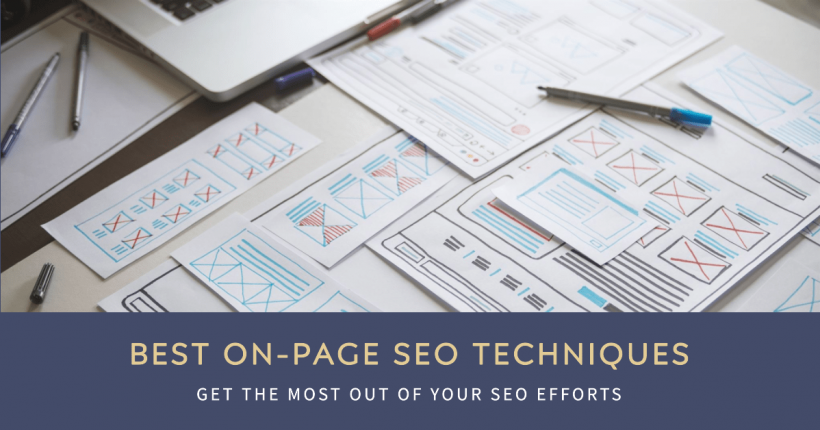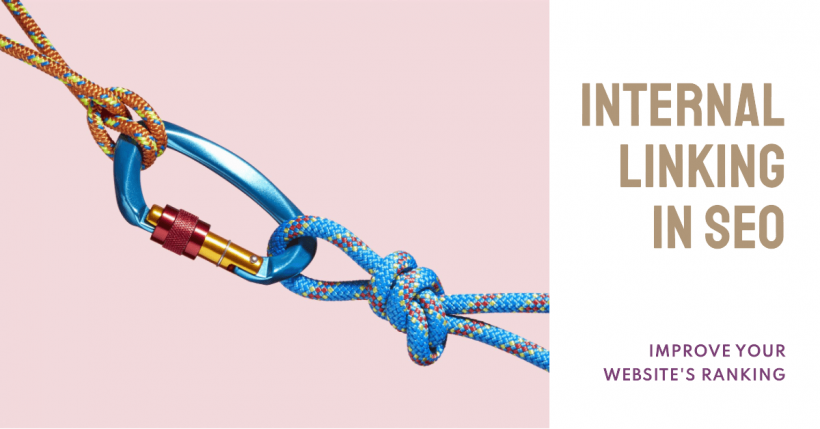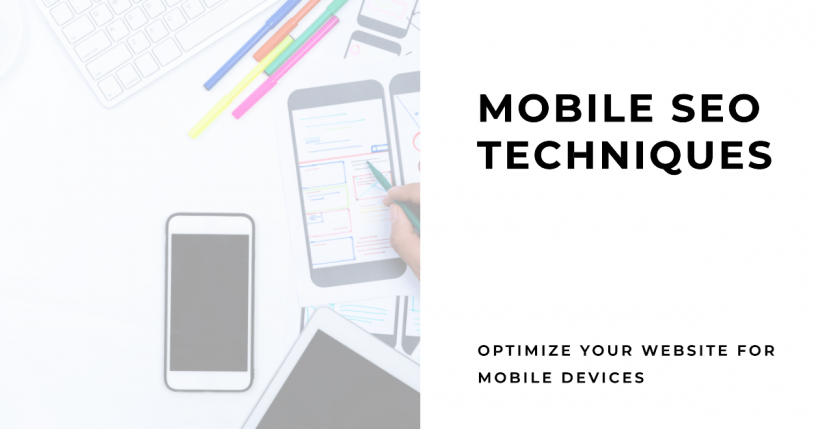
Are you tired of seeing your competitors outrank you on Google?
It’s time to unlock the secrets of on-page SEO!
We’ll delve deep into the most effective on-page SEO techniques to help you dominate search engine rankings. Ready to boost your website’s visibility, traffic, and conversions?
Let’s get started!
What is On-Page SEO?
On-page SEO determines how well your website ranks on search engines. The best on-page optimization techniques can enhance user experience, increase organic traffic, and boost your site’s overall performance. We will cover everything from keyword research and meta descriptions to mobile optimization and page speed – providing a complete guide to on-page SEO best practices.
On-Page vs. Off-Page SEO: What’s the difference?
On-Page SEO refers to the various tactics and techniques you can utilize to optimize individual web pages for search engines. This includes optimizing HTML elements like title tags, meta descriptions, headers, content, internal links, and images. The goal is to improve your page’s relevance, user experience, and search engine rankings.
Off-Page SEO targets external ranking factors, such as backlinks, social signals, and brand mentions. Combining On-Page and Off-Page SEO strategies ultimately drives your website’s success in search engine result pages (SERPs).
Keyword Research
Keyword research is the foundation of an effective On-Page SEO strategy. Understanding the search terms your audience uses allows you to create content that answers their questions and satisfies their needs. By targeting relevant and high-potential keywords, you increase the chances of your web pages ranking higher on SERPs.
Tools and Techniques for Effective Keyword Research
- Google Keyword Planner: This free tool identifies keyword opportunities and analyzes search volume trends.
- SEMrush: A comprehensive SEO tool that provides valuable data on keyword difficulty, monthly search volume, and related keywords.
- Ahrefs: A powerful SEO tool that offers extensive keyword data, such as search volume, keyword difficulty, and related search terms, to help refine your strategy.
- Ubersuggest: Another fantastic tool that helps you find long-tail keywords and provides insights on search volume, competition, and trends.
Analyze your competitors: Understanding the keywords your competitors are targeting can help you discover new opportunities and refine your strategy.
Look for long-tail keywords: These longer, more specific phrases typically have lower competition and higher conversion rates, making them ideal for targeting.
Meta Descriptions
A meta description summarizes your web page’s content under the title tag in search engine results. Although they do not directly influence rankings, well-written meta descriptions can entice users to click on your page, leading to higher click-through rates (CTR) and increased organic traffic.
Best practices for writing meta descriptions
- Be concise: Aim to keep your meta description within 160 characters to ensure it’s displayed fully in search results.
- Incorporate your target keyword: Including your main keyword can signal relevance to search engines and helps users understand the topic of the page.
- Make it compelling: Use persuasive language to encourage users to click on your link. Highlight the unique value your page offers and create a sense of urgency.
- Avoid duplication: Ensure every page on your website has a unique meta description to prevent confusing search engines and users.
Title Tags
Title tags are the HTML elements that define the title of a web page, appearing at the top of the browser window and as the clickable headline in search engine results. A well-optimized title tag is crucial for attracting users’ attention, increasing CTR, and ensuring search engines understand the content of your page.
Tips for creating effective title tags
- Keep it within 60 characters: Most search engines truncate titles beyond 60. Stay within this limit to avoid losing valuable information.
- Place your target keyword near the beginning: Incorporating your main keyword early in the title tag improves visibility and signals relevance to search engines.
- Be descriptive and clear: Use a title that accurately portrays your page’s content, making it easy for users to understand what they can expect.
- Create unique titles: Ensure each page on your site has a distinct title tag to help search engines index your content accurately.
Internal Linking

Internal linking refers to connecting your website’s pages with hyperlinks, allowing users and search engines to navigate your site easily. A well-structured internal linking strategy can improve user experience, promote deeper engagement with your content, and boost your site’s overall SEO by distributing link equity and helping search engines discover more pages.
Strategies for effective internal linking
- Use descriptive anchor text: Anchor text should be contextual and accurately describe the linked content. This helps users and search engines understand the connection between pages.
- Link to relevant content: Ensure the pages you link to provide value and build upon the current topic, enhancing the user experience and increasing engagement.
- Link deep: Avoid only linking to top-level pages, such as your homepage and contact page. Deep links guide users toward more specific content they may find interesting.
- Don’t overdo it: Keep the number of internal links on a single page reasonable. Too many links can look spammy and potentially diminish the user experience.
Content Optimization
High-quality, relevant, and engaging content is the backbone of your website’s success. Great content attracts users and signals to search engines that your site is a valuable and authoritative resource. Content optimization ensures your target audience can find and appreciate the information you present.
Techniques for optimizing content
- Focus on readability: Use short paragraphs, headings, and bullet points to break up your content, making it easier for users to consume and comprehend.
- Write for your audience: Prioritize creating content that answers your users’ questions, addresses their pain points, and offers valuable insights.
- Include your target keyword: Incorporate your primary keyword naturally throughout your content, avoiding keyword stuffing, which can harm your rankings. Instead, focus on creating informative and engaging content guided by your keyword research.
- Optimize header tags: Use headers (H1, H2, H3) to break up your content into sections, making it easier to navigate. Your headings should contain relevant keywords to signal the importance to search engines.
- Stay up-to-date: Regularly update your content to ensure it remains relevant, accurate, and helpful to users. This also keeps your site fresh and signals ongoing value to search engines.
Images in SEO
Images can significantly enhance user engagement, break up text-heavy content, and help improve your site’s aesthetics. Well-optimized photos also play a crucial role in SEO by reducing page load times, improving accessibility, and offering opportunities for additional keyword targeting.
Tips for optimizing images for SEO
- Choose the suitable format: Use JPEG for photos and PNG for graphics or images with transparent backgrounds. Aim for high-quality images with small file sizes to prevent page load delays.
- Use descriptive file names: Choose a name that accurately describes the image and incorporates your target keyword. This helps search engines and users understand the content of the picture.
- Optimize alt tags: Add alternative text (alt tags) to your images, describing their content. This improves accessibility for visually impaired users and gives search engines more context about your content.
- Use image compression: Compressed images maintain quality while reducing file size, improving page load times, and enhancing user experience. Tools like TinyPNG and Compressor.io can assist with this process.
URL Structure
A good URL structure helps search engines and users understand the content of your web pages quickly and efficiently. An organized, keyword-rich URL can positively impact search engine rankings and improve user experience.
Best practices for structuring URLs
- Keep it simple and readable: Avoid using long URLs full of numbers and special characters. Instead, use concise, descriptive words to structure your URL.
- Include your target keyword: Incorporating your main keyword can signal relevance and make your URL more user-friendly.
- Use hyphens to separate words: Use hyphens (-) instead of underscores (_) to separate words in your URL, as search engines more easily recognize them.
- Use lowercase letters: Consistently use lowercase letters to prevent confusion or errors due to case sensitivity.
Mobile Optimization

With the rising number of mobile users, it has become essential for websites to be optimized for different screen sizes and devices. Mobile optimization ensures your site offers the best user experience across various devices, improving user engagement, conversion rates, and search engine rankings.
Techniques for effective mobile optimization
- Use responsive design: Implement a responsive design that automatically adjusts the layout of your site to fit the user’s screen size and device type.
- Optimize for speed: Mobile users expect quick-loading pages. Optimize your site’s images, code, and other elements to improve load time and performance.
- Improve usability: Ensure your buttons, navigation, and links are easily clickable and readable on small screens to enhance the user experience.
- Test on various devices: Regularly test your site’s functionality and appearance on different devices and browsers to ensure the best user experience.
The Role of page speed in SEO
Page speed refers to the time it takes for your website to load and become interactive for users. Slow-loading pages can increase bounce rates, reducing user engagement and negatively impacting your search engine rankings. Improving your site’s load time is crucial for providing a better user experience and overall SEO.
Tips for improving page speed
- Optimize images: Compress your images and choose the proper format to reduce file sizes and improve load times.
- Use browser caching: Implement browser caching to allow users’ devices to store sections of your site, reducing the need for resources and improving subsequent load times.
- Minify code: Minify your HTML, CSS, and JavaScript code to remove unnecessary elements, such as spaces and comments, reducing file sizes and improving page speed.
- Use a content delivery network (CDN): CDNs distribute your content across a network of servers, reducing latency and improving load times for users far away from your primary server.
Conclusion
Understanding and implementing the best on-page SEO techniques can significantly improve your website’s search engine rankings, user experience, and overall performance. Remember to consistently re-evaluate and refine your strategy to stay ahead of your competition.
By staying committed to optimizing every aspect of your site – from meta descriptions and title tags to mobile optimization and page speed – you will ensure your website’s long-term success in the ever-changing world of SEO. So, go forth and dominate those search engine result pages!